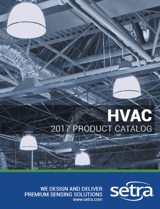USP 797 is the standard in place governing the sterile preparation of compounded pharmaceuticals. USP 797 covers the compounding of both hazardous and nonhazardous drugs with a focus on the protection of sterile compounds and environments from contamination. This standard is in place to ensure patient safety and reduce risks associated with compounding pharmaceuticals, including contamination, infection, and incorrect dosage. The standard helps to guarantee patients receive quality drugs free from contaminates. This standard applies to all pharmacies that produce compounded sterile preparations (CSPs); this includes pharmacies within hospitals, radio or nuclear pharmacies, chemo units, and operating rooms. The goal of the standard is to prevent harm to patients resulting from microbial contamination, bacterial endotoxins, variation in the strength of ingredients, and chemical and physical contaminates.
Training
One of the main areas of focus in the USP 797 Standards is personnel training for the preparation of sterile CSPs. To maintain CSPs in an ISO Class 5 environment, staff must be trained in best practices and core competencies related to CSPs. Personal Protective Equipment (PPE) is required in an ISO Class 5 environment at all times. PPE is put on after personal outer garments, all cosmetics, and jewelry and piercings are removed. Depending on the environment, PPE can include dedicated shoes or shoe covers, head and facial hair covers, face masks, and eye shields, after which the personnel must cleanse their hands and don a gown. The final step for all PPE is sterile powder free gloves.
Other important elements of personnel training for USP 797 include:
- Antiseptic hand washing
- Disinfection of nonsterile compounding areas
- Proper measurement and identification of ingredients
- Proper aseptic handling of products
- Sterilization of high risk CSPs
- Proper labeling and packaging of CSPs
Risk Determination
USP 797 outlines standards for 3 levels of risk for CSPs. It is worth mentioning that these standards are not comprehensive, but rather meant to be a guide to determine the risk level of a CSP to develop proper procedures and practices for handling CSPs.
Risk levels:
Low-Risk Level CSPs – CSPs at a low risk of contamination
- Compounded solely within an ISO Class 5 environment
- Single-volume transfers of sterile doses
- Simple aseptic measuring and transferring with no more than 3 packages of manufactured sterile products
Medium-Risk Level CSPs – Low-Risk Level CSPs but with one of the following conditions:
- Multiple small doses of sterile products to be administered to either multiple patients or one patient multiple times
- Complex aseptic manipulations, not-single volume transfers
High-Risk Level CSPs – compounded under the following conditions means CSPs are contaminated or are at risk of contamination
- Compounded with nonsterile ingredients or a nonsterile device is used
- Compounded outside an ISO Class 5 environment
- Personnel not wearing proper PPE
- Purity and strength of components assumed and not verified
Policies and Procedures
USP 797 outlines areas that require policies and procedures to ensure drug and patient safety. These areas include:
- Verification of compounding accuracy and sterility
- Environmental quality and control
- Verification of Automated Compounding Devices (ACDs) for Parenteral Nutrition Compounding
- Finished preparation release checks and tests
- Storage and Beyond-Use Dating (BUD)
- Maintaining sterility, purity, and stability of dispensed and distributed CSPs
- Patient monitoring and adverse events reporting
- A Quality Assurance Program
This is a summary of the current USP 797 standards. However, USP 797 is currently undergoing revision and will be updated later in 2019. Once those revisions are in place, a comprehensive update of the changes will be posted.
Click to learn more about USP 800 and best practices for USP compliance.


